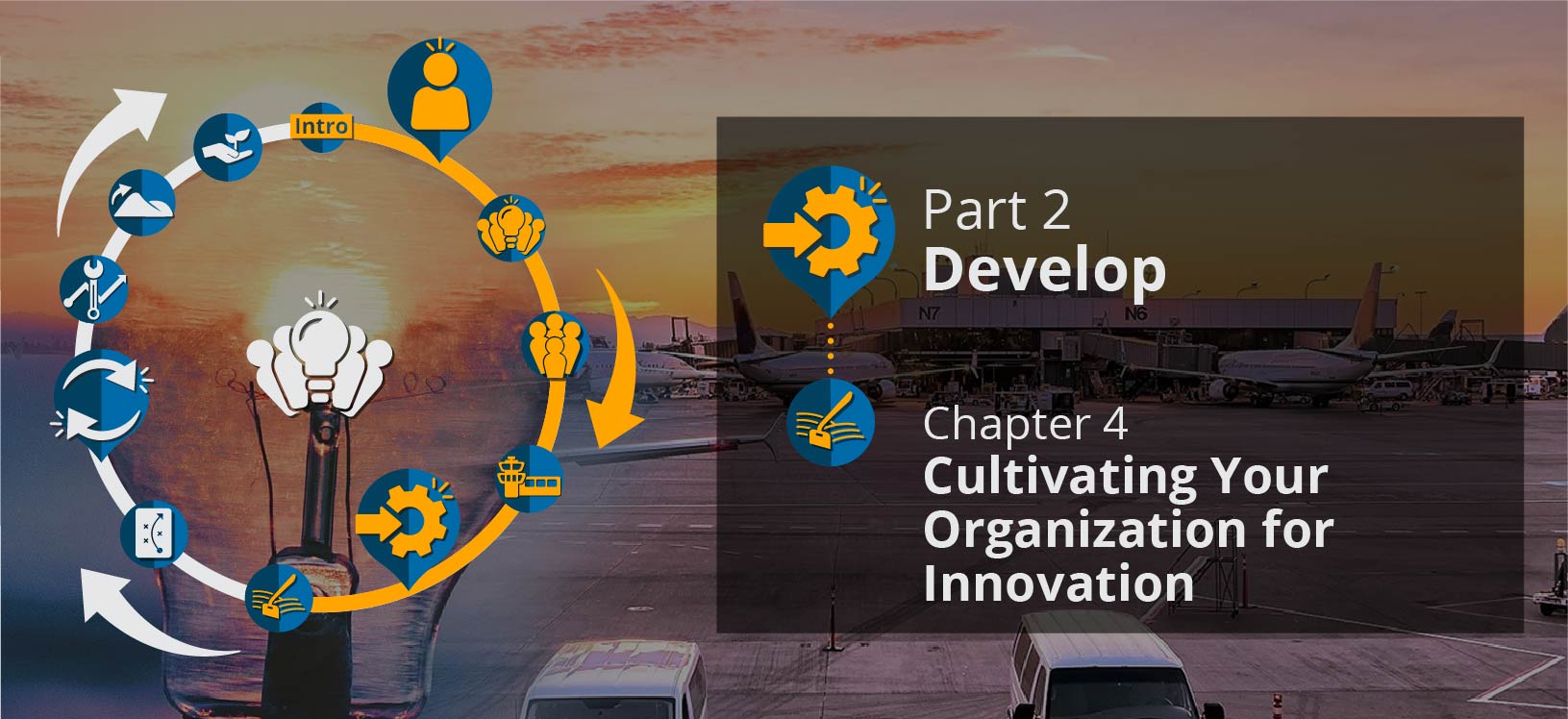

This is a Deep Dive page. Select the chapter for the Fast Track
Before You Begin: A Word About Risk
Making any change-let alone a culture change-involves taking risks. Throughout this WebResource, you will see risk mentioned, along with various considerations for diminishing it. One of the best ways to alleviate risk is to use or augment your airport's formal decision-making process during the Try Innovation step of the cultivation cycle, as described earlier in this chapter. It is also helpful to define thresholds that will escalate decision-making about new concepts upward for leadership approval, as needed. These thresholds can be based on things like the number of people or departments that a change may impact, or a certain dollar amount that will be involved in implementing a change.
Another way to mitigate risk from the start is to be open with colleagues and leaders about your new ideas and plans. This will help ensure that ideas are not implemented without some level of collaborative review at a managerial or executive level. You should not be taking this journey alone. Transparency and collaboration can be beneficial in preventing unacceptable risks from occurring. This WebResource advocates for working in teams and involving cross sections of colleagues in the pursuit of culture change.
Other ways to mitigate risk include the following:
- Keep ideas in line with your airport's strategic vision and policies. Make sure your ideas do not negatively impact your mission.
- For instance, if you want to automate some maintenance duties, consider how the timing of cleaning services will impact the passenger experience. How will you maintain airport cleanliness during a power outage?
- Consider compliance with local, state, and federal laws and rules.
- For example, if you are considering new diversity, equity, and inclusion policies, make sure they are aligned with employment law before implementing them.
- Ensure that changes align with the financial goals of your airport.
- For instance, if your ideas will require capital improvements or new technology implementation, you may want to work with leadership or other departments to share costs or to plan a future budget for these changes.
- Understand how changes may impact daily operations.
- For example, when swapping out a product for a more environmentally friendly one that relies on recycled material, consider any potential supply chain issues that may occur.
Evaluating the severity and impact of each risk for a new idea can be as simple as creating a risk map for relevant categories (e.g., strategy, compliance, financial, and operations for the last four examples above) and assigning a level of risk from 1 to 10 for each. Other resources related to risk management include your airport's continuity of operations plans or business continuity plans. Looking at these plans can be a great way to understand potential risks and methods for mitigation.



